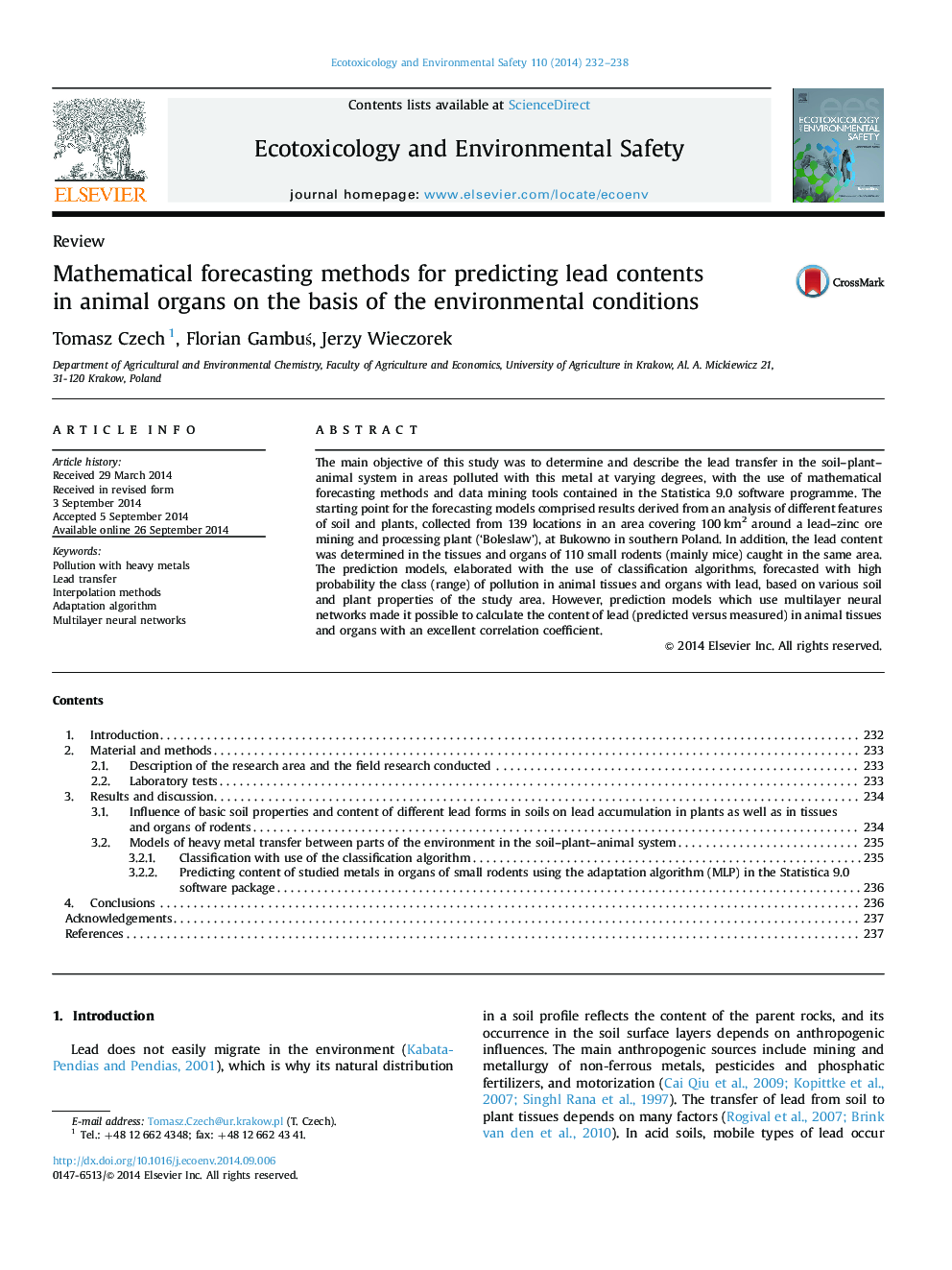| Article ID | Journal | Published Year | Pages | File Type |
|---|---|---|---|---|
| 4419923 | Ecotoxicology and Environmental Safety | 2014 | 7 Pages |
•Classification algorithms predicted Pb content classes correctly in 64% of cases.•MLP methods predict Pb content in organs with a high correlation coefficient value.•Development of this research will reduce the environmental monitoring cost.
The main objective of this study was to determine and describe the lead transfer in the soil–plant–animal system in areas polluted with this metal at varying degrees, with the use of mathematical forecasting methods and data mining tools contained in the Statistica 9.0 software programme. The starting point for the forecasting models comprised results derived from an analysis of different features of soil and plants, collected from 139 locations in an area covering 100 km2 around a lead–zinc ore mining and processing plant (‘Boleslaw’), at Bukowno in southern Poland. In addition, the lead content was determined in the tissues and organs of 110 small rodents (mainly mice) caught in the same area. The prediction models, elaborated with the use of classification algorithms, forecasted with high probability the class (range) of pollution in animal tissues and organs with lead, based on various soil and plant properties of the study area. However, prediction models which use multilayer neural networks made it possible to calculate the content of lead (predicted versus measured) in animal tissues and organs with an excellent correlation coefficient.
